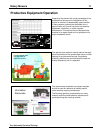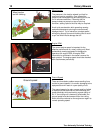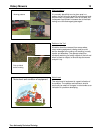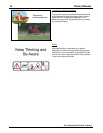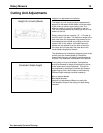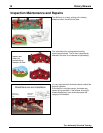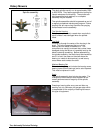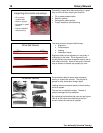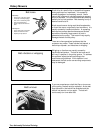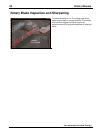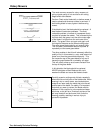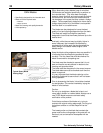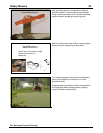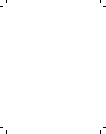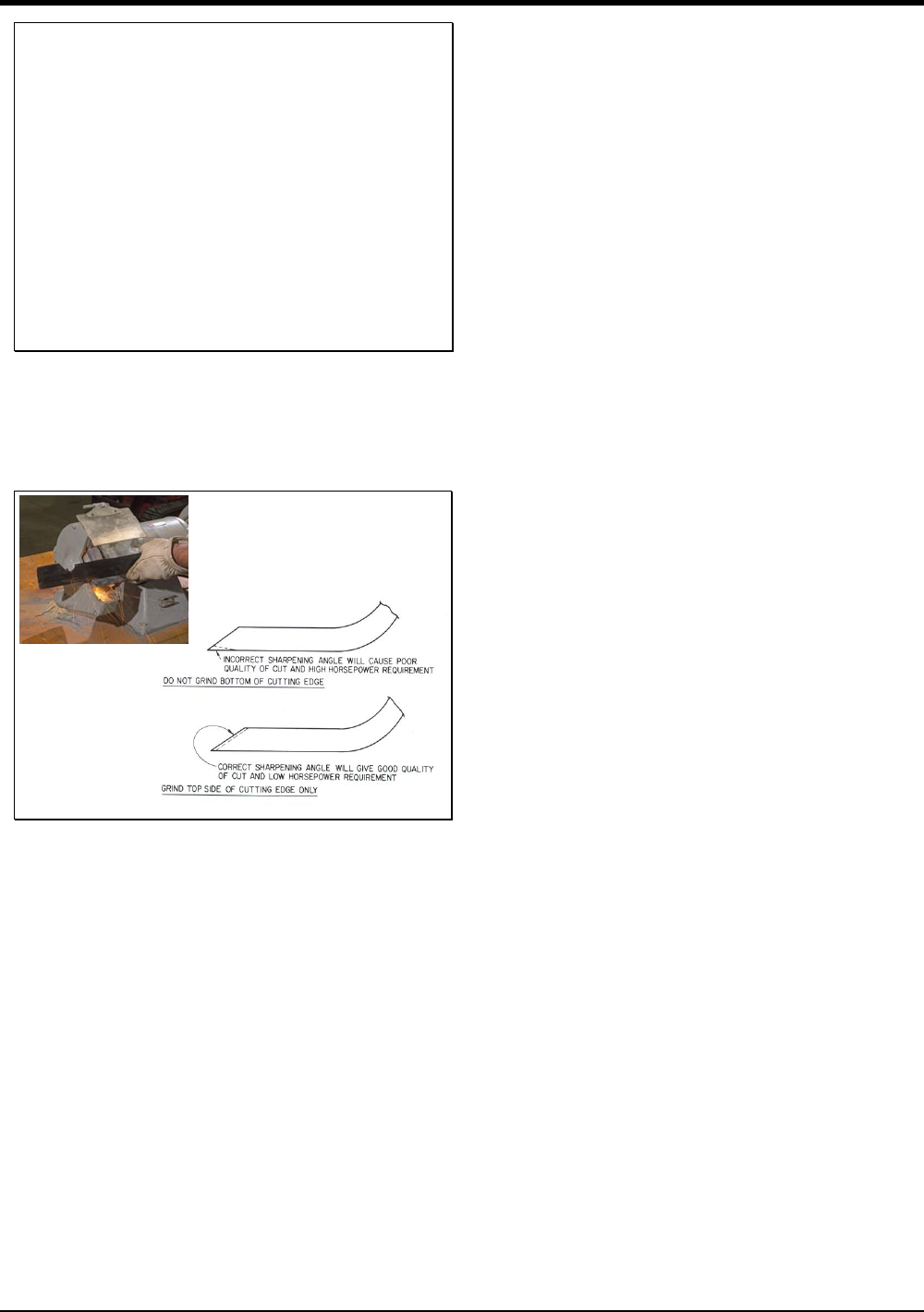
22 Rotary Mowers
Toro University Technical Training
OEM Blades
• Specifically designed for the intended deck.
• Meets all of the required tests.
– Hardness
– Object expulsion
• Meets the mowing and quality demands.
• Life expectancy.
When discussing rotary blades, keep in mind that
OEM blades are designed specifically to perform on
the intended deck. They have been thoroughly
tested to insure that they are hard enough to provide
the desired life, but not to hard as to be brittle and
risk breakage in the event that they contact a foreign
object. The are specifically designed to insure that a
foreign object that is hit by the blade is not expelled
from the deck in a unsafe manner.
The blades are also designed to insure the best
quality of cut and clippings dispersion from the deck.
The blade sail angle and height is specifically
designed to insure that the mower performs up to the
desired level.
And lastly, while the cost may be slightly higher in
some instances, the increased life expectancy,
coupled with all of the work that has gone into the
safety design of the blade makes original OEM
blades avalue.
Typical Rotary Blade
Cutting Edge
Keep the blade cutting edges as sharp as possible. It
is important that the sharpening process be done
correctly. The four items that must be checked if a
blade is removed for sharpening are:
The blade must be checked to assure that it is not
bent and has the correct attitude in relation to the
housing and ground surface.
The blade must be sharpened in the correct manner.
The blade balance must be checked each time the
blade is reground.
It is very important that the blade retaining nut be
sufficiently tightened to assure that it will not loosen
during operation.
Prior to sharpening the blade, it should be checked
for straightness. This can be checked by laying the
blade on a flat surface.
Caution:
Do not try to straighten a blade that is bent, and
never weld a broken or cracked blade. Always use a
new TORO blade to assure continued safety
certification of the product.
Grind the top surface of the blade only, trying to
maintain the original cutting edge angle. Do not grind
the bottom surface or a chisel shape will be the
result.
The lowest portion on the blade that contacts the
grass must be the cutting edge or the grass will not
be cleanly cut and excessive horsepower will be
needed.



